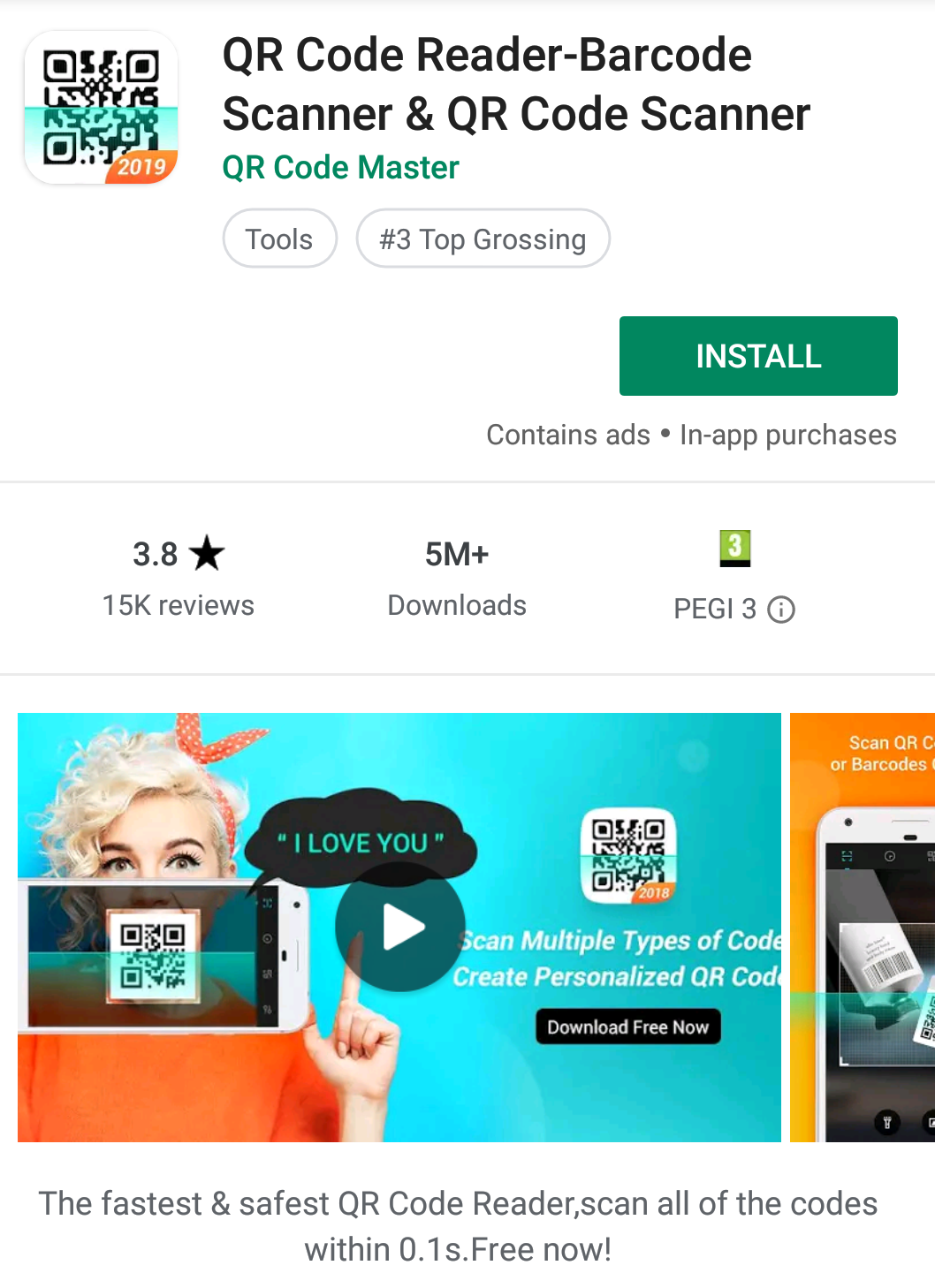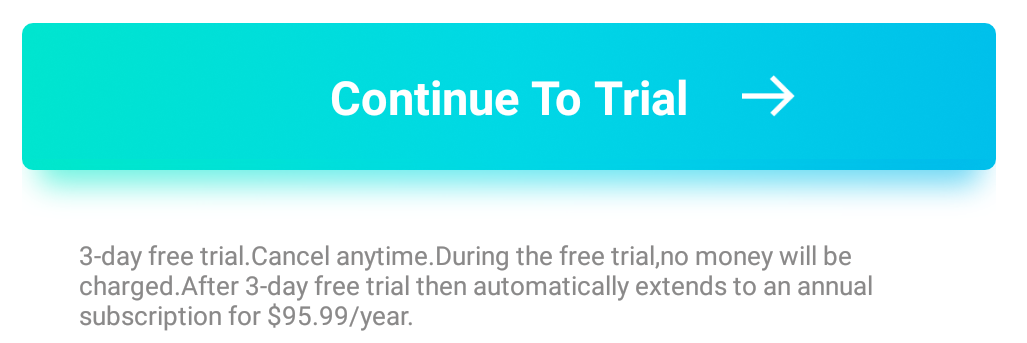‘Fleeceware’ apps overcharge users for basic app functionality
SophosLabs have discovered a collection of Android apps on Google’s Play Market whose sole purpose appears to be to severely overcharge users for mobile apps that provide very simple functionality available on low-cost or free apps.
The app developers take advantage of a business model available within the Play Market ecosystem in which users can download and use the apps at no charge for a short trial period. When the trial expires, if the user who downloads and installs one of these apps hasn’t both uninstalled the application and informed the developer that they do not wish to continue to use the app, the app developer charges the user.
In the case of a normal app, this might cost only a few dollars; But the publishers or developers of the apps described in this post routinely charge users hundreds of dollars (or Euros, depending on the geographic region in which the user resides).
Because these apps exist in a categorical grey area that isn’t overtly malware, and isn’t a potentially unwanted app (PUA), we’ve coined the term fleeceware, because their defining characteristic is that they overcharge users for functionality that’s widely available in free or low-cost apps.
We reached out to representatives of Google’s Play Market to find out whether the terms and conditions under which these apps are sold violate any of Google’s public or internal policies.
We have not received a response from Google representatives about whether high-value monthly subscriptions to apps with very basic functionality violates their in-app purchasing policies. Last week, after Sophos had brought this purchasing behavior to their attention and sent along a list of 15 apps engaged in this practice, a Google representative told us the company had decided to pull some from their store. By our count, 14 of the 15 apps we informed Google about have been removed. A subsequent search revealed another batch of apps, with even higher download counts than the first, still available on the Play Market.
We encourage Google to do more to tighten up their policies that, currently, do not explicitly prohibit app developers from taking advantage of this in-app purchasing loophole. Customers who experience buyer’s remorse may have no recourse to ask for refunds after a few days. If you aren’t very actively monitoring your credit card for charges like this, you might not notice until the window for refunds has closed.
The fleeceware business model
Because the apps themselves aren’t engaging in any kind of traditionally malicious activity, they skirt the rules that would otherwise make it easy for Google to justify removing them from the Play Market. Their developers also seem to be very good at staying under the radar from security vendors. Even so, there are other characteristics of these apps that make them less-than-desirable.
These applications are, fundamentally, simple. We’ve observed tools like QR or barcode readers, calculators, tools to make animated GIFs, or photo editors. In most cases, there are free alternatives from well known vendors already available on the Play Market.
When you run any of these apps, the app prompts the user to sign up for a very short free trial period, usually 3 days, through an interface within the app itself. The app makers require you to sign up with payment information before you can run the app, and many users fail to understand the requirement that, in order to drop out of the trial, they have to explicitly tell the developer that they are cancelling the trial period.
Many simply forget to do so, or think that uninstalling the app constitutes a cancellation. But the app developers don’t see it that way.
In many reviews for fleeceware apps, users report that they failed to unsubscribe from the trial period, and get charged very high amounts of money. In the case of one QR code reader app, the developer charges users €104.99 after 72 hours. The makers of an app called Professional GIF Maker charge users €214.99 when the trial ends. We haven’t seen apps sold at this price before.

With millions of installations, in some cases, if even a small percentage of users forgets to cancel their subscription before the trial period lapses, app creators can make significant money.
App users see trial notifications like this one when they launch the apps that engage in this practice for the first time. People who sign up for the trial are required to provide payment information the first time they launch the app using Google’s in-app payments.
Of course they can “cancel anytime” but this is a bit pricier than, say, a typical magazine subscription. Once you’ve been charged, there is hardly any recourse to get your money back. 
While consumers are free to purchase anything they like, we don’t think an app which generates an animated GIF image should cost hundreds of Euros or dollars. And in some cases, the publisher isn’t going to charge those users only one time: Several of these fleeceware apps inform users that they will be charged every month until the user cancels their subscription.
This is a breakdown of some of the fleeceware applications that we identified on Google’s Play Market. As we mentioned previously, 14 other apps that engaged in a similar business practice have subsequently been pulled from the Play Market by Google representatives after we inquired about the business model. The ones listed below are still available, so we have refrained from linking directly to them.
| Package name | Install Count | Cost (after free trial ends) |
| qr.code.barcode.maker.scanner.reader | 5,000,000+ | €104.99 |
| faceapp.facemystery.learnmoreaboutyourself | 10,000,000+ | €104.99 |
| com.recorder.video.magic.capture.gameplay | 5,000,000+ | €104.99 |
| com.ally.video.recorder | 5,000+ | €114.99 |
| com.pey.old.me.face.aging | 50,000+ | €104.99 |
| com.gifmaker.giffree.gifeditor | 5,000+ | €219.99 |
| com.hidephotovideo.calculatorphotovault | 1,000+ | €104.99 |
| com.compasspro.gpscoordinates | 10,000+ | €219.99 |
| com.searchbyimage.reverseimagesearch | 10,000+ | €219.99 |
| Total | 20,081,000 (estimated) |
Users’ fleeceware fury
From the user reviews on the Play Market store, it’s clear that many users who installed these apps and were subsequently charged extortionate fees are understandably furious. Users indicated that they were charged different amounts based on their geographic region. Some people are asking Google to take these apps down, and some want get a refund.
Google addresses concerns
Google polices the apps that they publish on their online store for outright malicious activity and fraud. But these applications evaded Google’s attention by staying on the razor’s edge of legality, and exploited the fact that most people avoid reading fine print.
Worse, these apps are not even particularly good, unique, or effective. The publishers engaging in this business practice just offer their versions of apps that are widely used and already exist (in some cases, for free) from far more reputable vendors. For example, Sophos also has a QR code reader in our Sophos Mobile security application.
Tools like these are certainly useful, but not hundreds-of-dollars (or euros) -per-month useful. If there was ever a time to say so, caveat emptor!
Источник
Что такое fleeceware, и как вы можете защитить себя?
Фактически в этом случае разработчики берут с вас большие деньги за базовые приложения.
Несмотря на то, что всегда намного безопаснее загружать мобильные приложения из официальных магазинов, таких как Google Play и App Store от Apple, все же даже в этом случае есть риск, что вы можете получить себе вредоносные приложения. Вы уже слышали о шпионских программах, рекламном ПО и прочих вредоносных программах, но теперь существует еще и Fleeceware.
Бороться с Fleeceware чрезвычайно сложно, ведь в коде подобных вредоносных приложений обычно нет ничего вредоносного. Оно не ворует ваши данные, не пытается захватить управление вашим устройством, а это значит, что нет ничего похожего на вредоносное ПО, которое будет проверяться Goggle и Apple. Вместо всего этого, данное ПО работает как рекламируется, но это сопровождается скрытой, чрезмерной абоненоской оплатой.
В январе компания Sophos, придумавшая термин «Fleeceware», обнаружила в Google Play 25 таких приложений, общее количество загрузок которых составило более 600 миллионов. В начале апреля исследователи выделили 30 приложений в iOS App Store, которые, по их словам, подпадают под категорию.
Схемы Fleeceware часто встречаются в тех же видах приложений, которые используются для других мобильных атак. Это, как правило, приятные на вид инструменты, такие как простые фото- и видеофильтры и редакторы, приложения для гороскопов или гадания, сканеры QR-кода и штрих-кода или такие утилиты, как фонарики и пользовательские клавиатуры. Исследователи Sophos также подозревают, что разработчики подобных программ используют учетные записи зомби, чтобы публиковать пятизвездочные обзоры или раздувать свое количество загрузок в Google Play, чтобы их предложения выглядели более законными.
Разработчики подобных приложений часто игнорируют стандарты, установленные Apple и Google, когда и как разработчики могут представлять покупки в приложении и плату за подписку. Некоторые утверждают, что предлагают пробный период, но предложат вам заплатить при первом запуске приложения. Другие говорят, что подписка будет составлять одну сумму в большинстве материалов приложения, но на самом деле при оформлении заказа взимается более высокая плата. Кроме того, приложениями пользуются пользователи, которые не знают, как отменить подписку, что позволяет продолжать взимать плату после того, как они удалили приложение.
Несмотря на правила Apple и Google, касающиеся покупок внутри приложений, разработчики подобных программ могут все еще заманивать людей на совершение покупок через свои учетные записи Apple и Google или даже просто собирать информацию об их кредитных картах напрямую, без надзора. Исследователи Sophos говорят, что многие из приложений, которые они видели прошлой осенью, платили за годовую подписку, но мошенники все чаще переходят на ежемесячные или еженедельные платежи. Вероятно, это попытка уменьшить шок и позволить мошенникам взимать больше с течением времени и попытаться совместить платежи с другими службами потоковой передачи и законными подписками на приложения, которые уже есть у людей.
Google объявил две недели назад, что ужесточает свои требования, поэтому разработчики должны сделать детали подписок, бесплатных пробных версий и вводных предложений более понятными. Google также предпринимает шаги для обеспечения большей прозрачности в управлении и отмене подписок.
Аналогичным образом, руководящие принципы Apple для разработчиков прямо запрещают необоснованные цены и мошенничество.
Чтобы избежать загрузки подобного ПО, старайтесь полагаться на приложения известных разработчиков. Имейте в виду, что крупные технологические компании уже предлагают самые основные инструменты и утилиты, такие как эмодзи, фильтры для селфи и сканеры QR-кодов бесплатно. Вы всегда можете сделать быстрый веб-поиск для сравнения цен, если вы не уверены в чем-то более нишевом. И если вы беспокоитесь, что ваши прошлые регистрации могут быть неконтролируемыми, Android и iOS предлагают централизованные списки подписок, которыми они управляют для вас. Имейте в виду, однако, что подписки, которые вы создали независимо, не будут здесь перечислены.
На iOS перейдите на эту страницу или откройте « Настройки» , нажмите свое имя, а затем нажмите « Подписки», чтобы просмотреть и управлять всем. Вы также можете открыть App Store, нажать свои инициалы в верхнем правом углу и нажать « Подписки» .
На Android откройте Play Store, коснитесь значка меню гамбургера в правом верхнем углу и выберите « Подписки» для просмотра и управления вашими регистрациями.
Источник
Обнаружено более 200 fleeceware-приложений, выманивших у пользователей 400 000 000 долларов
Linux для хакера
Эксперты компании Avast обнаружили 204 fleeceware-приложения в App Store и Google Play (134 для iOS и 70 для Android). Эти приложения были загружены более миллиарда раз и уже принесли своим авторам более 400 000 000 долларов США.
Напомню, что это сравнительно новая разновидность вредоносного ПО: данный термин был придуман компанией Sophos в конце прошлого года и тогда относился исключительно к приложениям для Android.
Реклама fleeceware-приложений часто появляется в социальных сетях, таких как Facebook, Instagram, Snapchat и TikTok. Такие приложения используют юридические лазейки, связанные с механизмом пробного периода. Так, если после окончания бесплатного периода пользователь просто удалит такое приложение, не отменяя подписку, деньги за его использование продолжат списываться со счета. К примеру, обнаруженные в прошлом году Android-приложения были установлены более 600 000 000 раз, игнорировали удаление и окончание пробного периода, и продолжали брать с пользователей немалые деньги (от 100 до 240 долларов в год) за самые простые инструменты, такие как сканеры QR-кодов и калькуляторы.
В основном найденные теперь специалистами Avast fleeceware-приложения представляют собой симуляторы музыкальных инструментов, редакторы фотографий, фильтры для камеры, приложения для хиромантии и предсказаний будущего, а также сканеры для чтения QR-кодов и PDF-файлов.
Эксперты рассказывают, что, например, приложение FortuneScope после короткого пробного периода списывает 66 долларов (примерно 5 000 рублей) в неделю, что обойдется жертве в 3 432 доллара (около 300 000 рублей) в год, если подписку не отменить. При этом стоимость большинства обнаруженных аналитиками приложений составляет от 4 до 12 долларов в неделю, то есть от 208 до 624 долларов в год.
«Несмотря на то, что эти приложения в основном выполняют свои функции, вряд ли пользователи захотели бы регулярно оплачивать дорогостоящую подписку, если бы знали ее реальную стоимость. Особенно учитывая существование более дешевых или даже бесплатных аналогов таких приложений, — говорит Якуб Вавра, исследователь угроз в Avast. — Похоже, эти fleeceware-приложения в первую очередь нацелены на детей и подростков. Такой вывод можно сделать из красочных скриншотов и рекламных баннеров таких приложений в популярных социальных сетях, в которых предлагается “бесплатно скачать” или “бесплатно установить” такие приложения. Пока родители заметят еженедельные денежные списания, создатели fleeceware-приложений уже могут получить значительный доход».
Полный список fleeceware-приложений, найденных в Google Play Store можно найти здесь, а в Apple AppStore — здесь.
Источник








